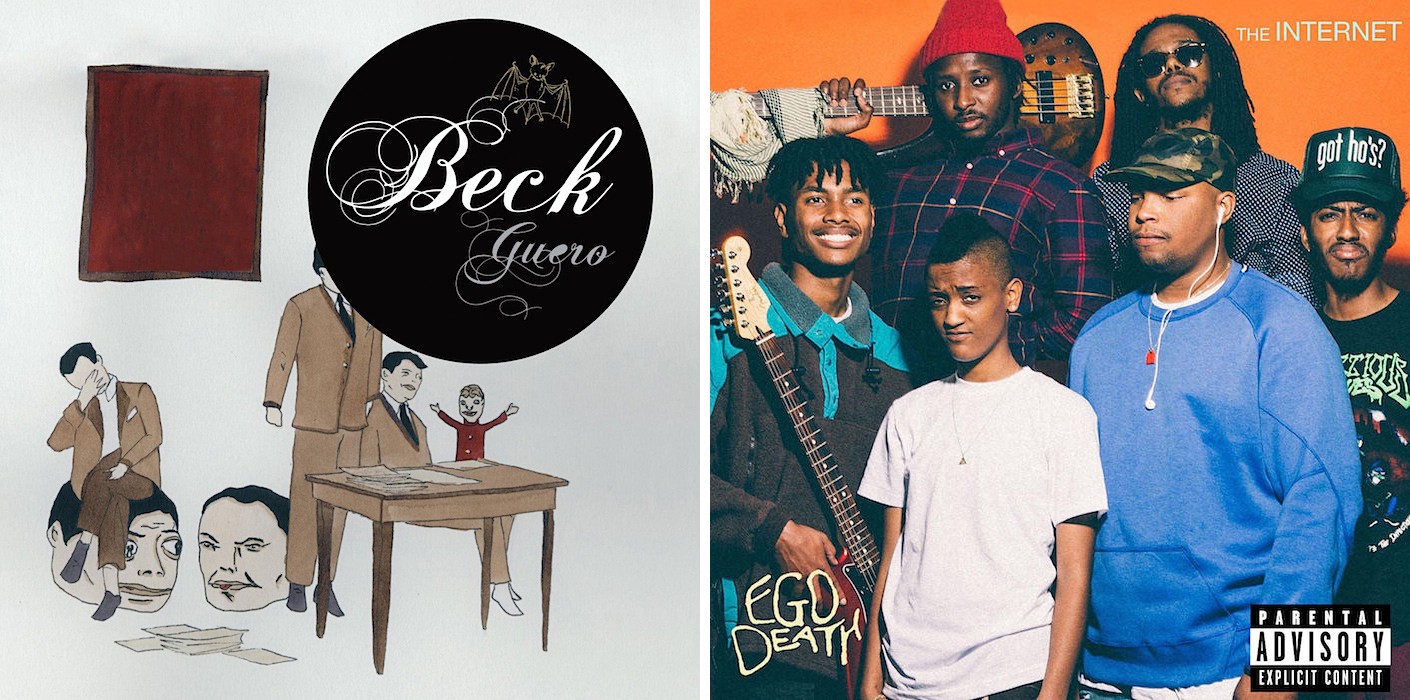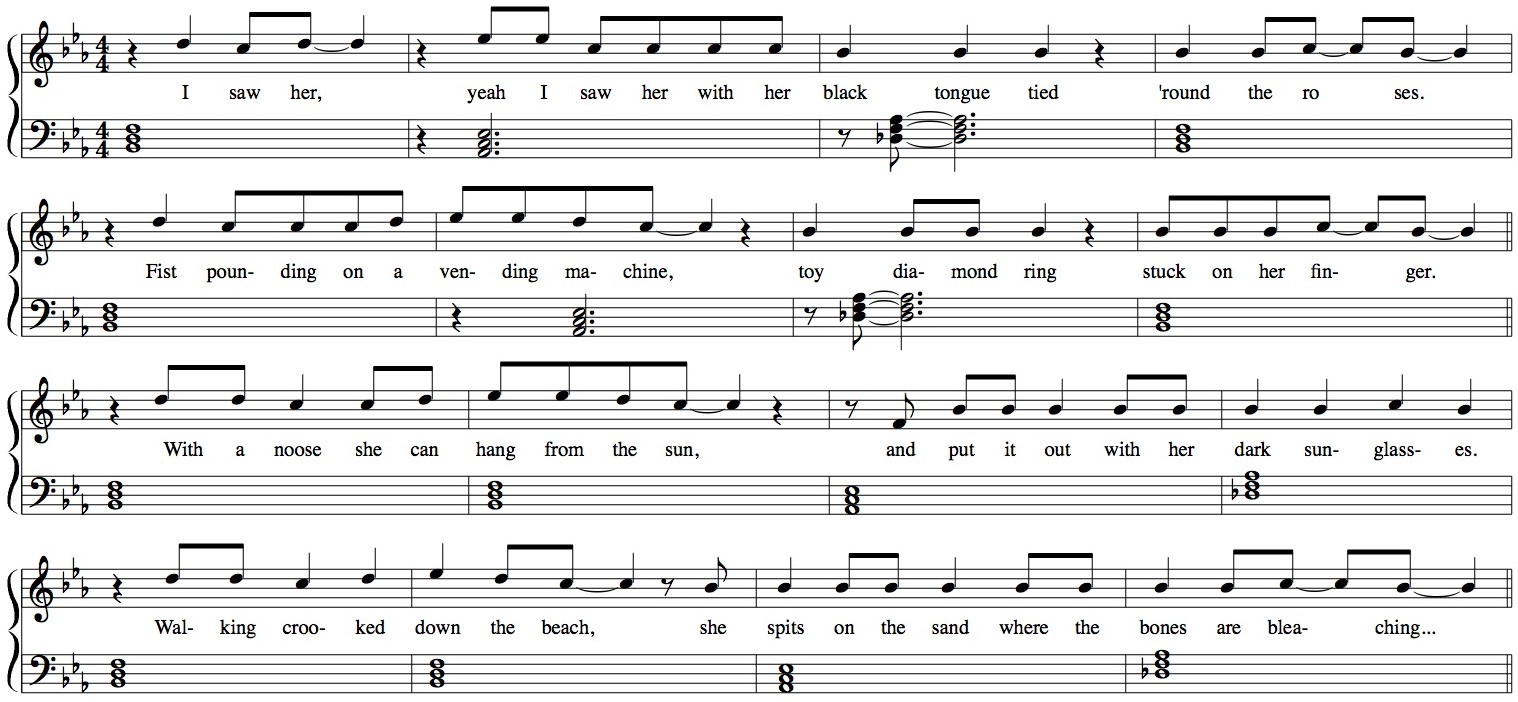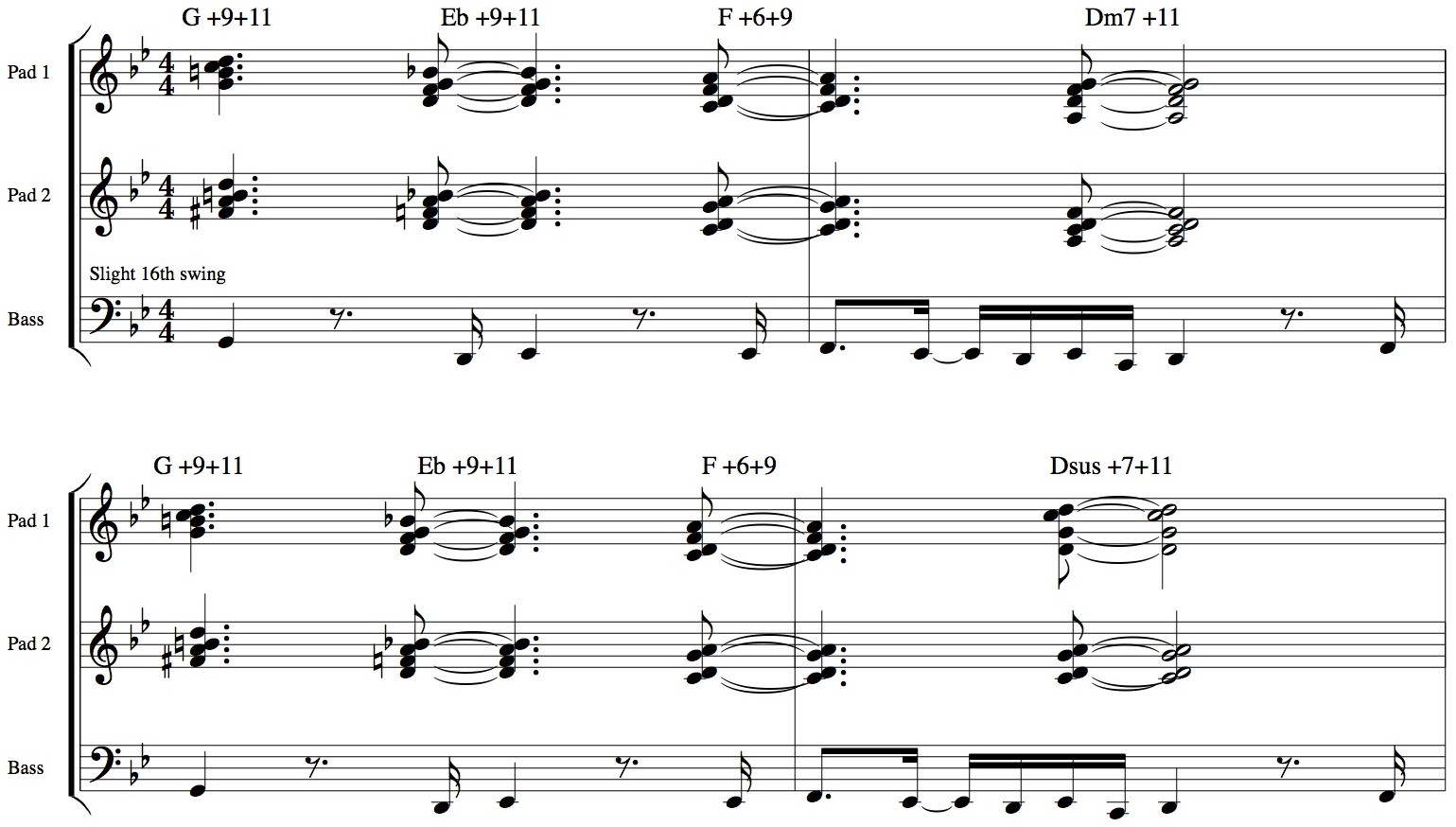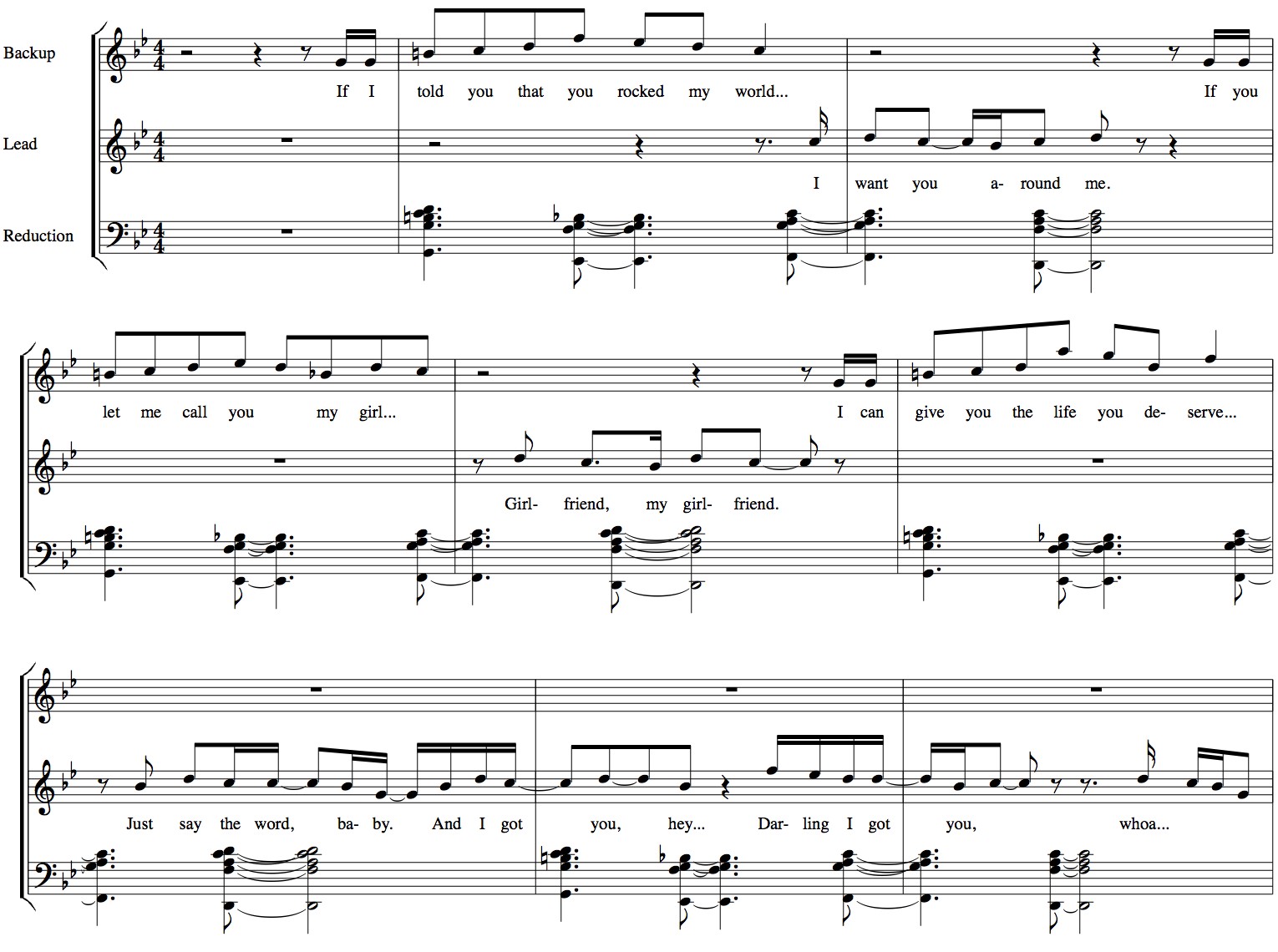Girl
Beck (’05) & The Internet (‘16)


Today we’re looking at two songs from LA-based artists, but this is a total coincidence. As LA is basically the postwar epicenter of the US music industry, so a trip to The City of Flowers and Sunshine was perhaps bound to happen at some point. Both of these artists occupy the elusive sweet spot between pop accessibility and adventurous musical choices, so there’s a lot of interesting details to get into today.
Writing about Beck is a tricky situation: he makes for a fascinating subject, but where do you even begin? How should you address the breadth and variety of his body of work? How much space should be dedicated to his unexpected commercial success, and how his subsequent output seems uniquely uncoupled from it? What about his family’s ties to the Factory and Fluxus scenes? What about Scientology?
For the sake of expediency, I will gracefully triple salchow over these concerns and assume a level of familiarity. If this is all new information to you, brew up a pot of coffee and head on over to Wikipedia: you’re in for a treat.
Beck’s “Girl” was the 2nd single from 2005’s “Guero,” between “E-Pro” and “Hell Yes.” “Guero” comes 3 years after “Sea Change,” and is a return to Beck’s particular blend of pop styles: lofi, sample-heavy 80s hip hop-influenced jams interspersed with folky acoustic numbers. Most of this album was co-written and produced by longtime collaborators The Dust Brothers, and material from 2006’s “The Information” was recorded concurrently with the “Guero” sessions.
Funfact! The Dust Brothers have back-to-back production credits on Korn’s “Kick the P.A.” and Hanson’s “Mmm Bop.” If that’s not versatility, I don’t know what is!
Beck’s “Girl” is a leftfield pop song, marked with a confident intentionality to its many subtly odd tweaks to the standard formula. This song could easily be dropped into an otherwise-normal commercial radio mix without causing too much of a problem. Any of the strange elements a casual listener may notice will likely be conceded, as the the slurred vocals over twangy guitars and sampled drums will instantly identify this as “A Beck Song.”

There’s a few notable things going on here: the prechorus is structured as two 4-bar phrases followed by a single 4-bar transition, which descends chromatically into the Chorus. The verses are in Bb Mixolydian, and the prechoruses and choruses are in F Mixolydian.
The Choruses are built around a 3-bar phrase, which is one of my favorite unusual pop tricks. This keeps the melodic phrasing tight, so that we don’t get an awkward extra bar after “my sun-eyed girl…” and transitions nicely back into the tonic of the verse (which is the same as the final chord of the Chorus’ progression).
The verses are split into two distinct sections, with similar chord progressions arranged in a slightly different order. The B verse also adds the bass, and has a different vocal melody, here’s a reduction:

Harmonically, this song is anchored by an odd feature: every chord is Major.¹
It reminds me of the auto-accomp modes on electric organs, where you can press a single key and the organ will fill the chord out for you, blissfully tossing out Major chords regardless of the context.² This choice, when coupled with the key changes between the verse and chorus, leads to some unusual melodies which emphasize the mode shifts (for example, the prechoruses’ “she doesn’t even know what’s wrong…”).
Regardless of this decision’s impetus, the net effect is one of Beck’s characteristic features when working in pop idioms: the contrast between the lyrical and musical content. The backing track suggests a fun-in-the-sun afternoon with pineapple kebabs and cheap beer in the backyard; but the lyrics suggest an oneiric meandering through the wastelands, couched in the language of death of decay.
Broadly, the lyrics of this song are an ode to a potential romantic interest, but this narrative is delivered with lines involving nooses, midnight hangings, bullets, white noise, and burning rags. The line “Throw a coin in a fountain of dust” is exemplary of this mix of desert imagery and bleak consumerism (vending machines, toy diamond rings, landfills).
Ordinarily, a line like “I know I’m gonna make her die / and take her where her soul belongs” would raise some concerns, but in this context I believe it’s fair to characterize as overtly figurative. My favorite couplet is “Walking crooked down on the beach / she spits on the sand where their bones are bleaching” — which I initially misheard (and prefer) as “walking corporate down on the beach.” This brings us to another frequent feature of Beck’s pop songs: unusual vocal deliveries through ambiguous enunciation.
When “Loser” unexpectedly climbed the charts back in the 90s, loosely pronounced, offkilter vocal deliveries were a hit with rock audiences. Today, this technique is popular in certain styles of rap (see the autotuned warbling of artists like Future and Desiigner). There’s something entrancing about listening to a vocalist bending familiar words into new sounds like this; it feels like an invitation to participate, to lean in, to decipher.
The Internet selected their name as a jokey placeholder, but I love that they decided to stick with it. Much of their graphic design and nonchalant visual presentation seems motivated by a working philosophy of “Let’s get together and make a thing” …and in this way, they’re not too dissimilar from Beck’s crew.
The Internet’s two primary contributers are Syd tha Kid and Matt Martians, who got their start working with the gonzo rap group Odd Future Wolf Gang Kill Them All in the late 2000s. They eventually split off to make tracks together, but when they weren’t able to find an appropriate artist to work with, they decided to have Syd do the vocals and put the albums out on their own.
Since their debut album “Purple Naked Ladies” in 2011, their material has become more collaborative, featuring input from guest artists, producers, and the musicians from their touring group. Despite this, the material on 2016's “Ego Death” is aesthetically cohesive and focused. The mixes remain engaging throughout, keeping a rough edge on much of the production, with arrangements open enough to absorb the complex harmonic work and seductive vocals.
A fair amount of The Internet’s press coverage focuses on the topic of Syd’s sexuality. From a recent profile in Time magazine:
She speaks with a mix of frustration and humility of the press she’s gotten for being an out gay artist. …She says it’s flattering when people see her as a gay icon in the music industry, but it’s not her defining identity. “I’m totally supportive of the movement, obviously,” she says. “But I want people to love me for my music.”³
So — with that said — let’s get into the music…

The Internet’s “Girl” is a neo soul song featuring synth-heavy-but-subtle production from Kaytranda. The combination of complex harmony on FM pads, synth bass, and smoky vocals give it a kind of updated 80s Anita Baker slow jam vibe.⁴
The drums feature an usual production choice: the left channel is offset by about 600 samples. This effect is sometimes called a “doubling delay,” and was used frequently in 80s rock & metal to split a single rhythm guitar track into the individual stereo channels.⁵
These days, engineers will sometimes use a doubling delay to “thicken up” backing vocals or a doubled lead instrument, but you don’t often hear it in such a front-and-center way. A few other songs on “Ego Death” use this on the drum tracks (most noticeably on “Something’s Missing”), and it leads to an interesting sensation of being pulled slightly off the center of the mix.
The synths pads on this song use longish attacks and portamento, leading to a feel of continually drifting into the changes, rather than hitting them straight-on. Coupled with the synth bass’ slightly swung rhythm, the timefeel gels into a slow bobbing motion, anchored around the sparse drum line and smooth-yet-precise vocal phrasing.
The song’s sections are delineated by production and vocal features, there’s only one chord progression used throughout (with a variation in the last chord) — but it’s a doozey:

There’s probably a cleaner way to name these chords, but this is the basic idea. During the chorus, the added notes are split between the two FM pads panned midway to the left and right; and there’s dreamy non-lyriced vocals doubling some of this — so it’s a little hard to get a handle on where exactly the clusters fall, instrumentally.
In any event, we get mode changes between the first two chords, and coupled with the slow tempo, this provides plenty of harmonic space for interesting vocal lines. The main chorus hook is built on a wholestep, oscilating between the D and C. Staying off the B natural ambiguizes the major 3rd of the extended G chord.
The prechorus has the fanciest vocal lines, switching between the B and Bb during the mode changes; and rising unexpectedly into a breathy falsetto on the 3rd repetition, romantically setting the lyrics “the life you deserve…”

The vocal melodies in the verse are arranged as a set of discrete phrases alternating with deliberate rests, which creates a sort of musical ellipses and keeps the vibe a little restless. The lyrics in the first verse involve burning passion, building pressure, and falling faster and faster…
The second verse includes a line about “old fashioned” romance, and it feels like the song’s lyrics were structured with this idea specifically in mind. There’s nothing lyrically that pegs this song as being from the 2010s: no talk of facebook timelines or sliding in the DMs. The message of this song is simple, universal, and direct: “I want you around me.”
Lastly, the album version of this song ends with a minute and half long remix, which slows the tempo from 80 to 78, and flirts with some Draft 7.30-era Autechre production: bandpassed, indeterminately-pitched phasing digital pads over pitched drum samples and odd 303 fragments. This section doesn’t appear on the radio edit [used in the above video], but it’s worth tracking down on Spotify.⁶ It includes two completely different vocal sections, and functions as a sort of short companion song.
[1] With the slight exception of the weird vocal lick at the end of the chorus.
[2] This could also come from the use of slide guitar: having a major-mode tuning on a strictly barred instrument would could result in this sort of writing.
[3] Time Magazine interview, emphasis is mine.
[4] 👗🎤 🌆 💋👌 Anita Baker - Good Love
[5] In the rock world, this practice faded away in favor of panning separately-recorded guitar takes as DAWs came into wide use.